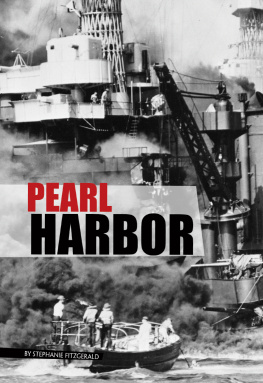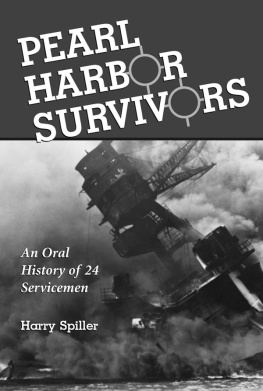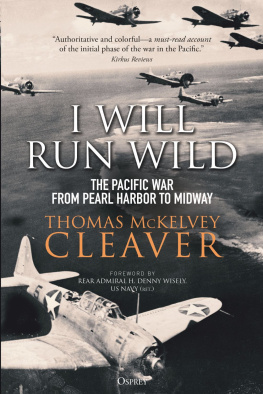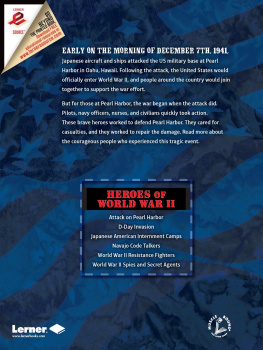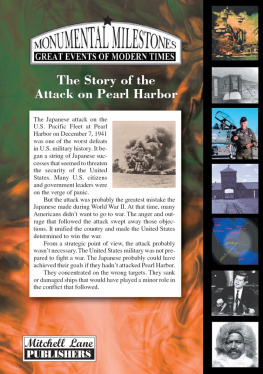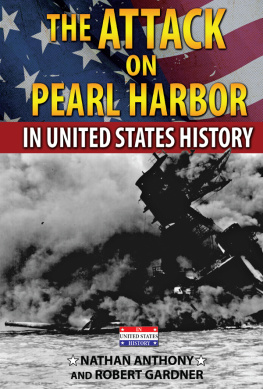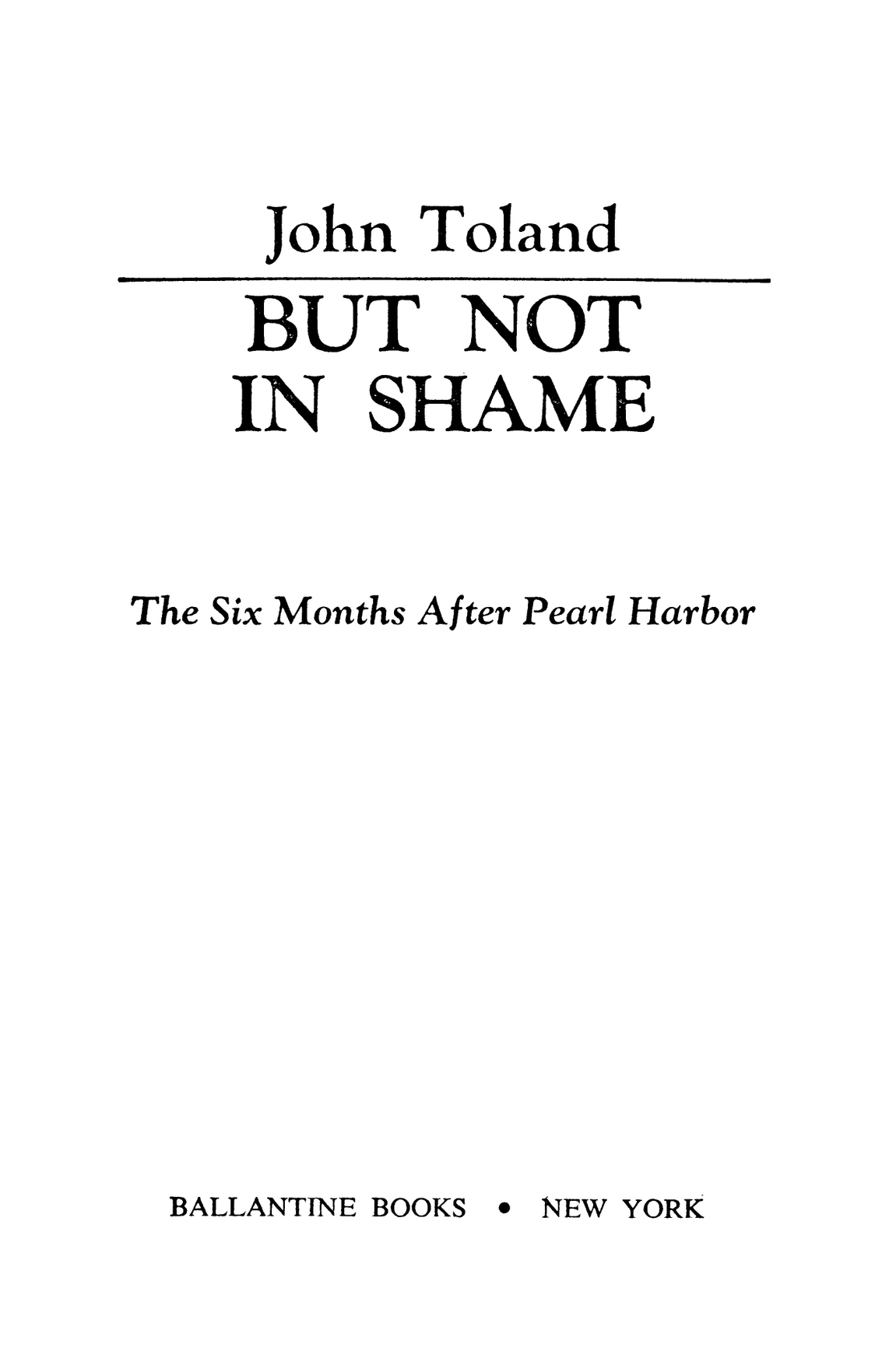The President of the United States ordered me to break through the Japanese lines and proceed from Corregidor to Australia for the purpose, as I understand it, of organizing the American offensive against Japan, a primary object of which is the relief of the Philippines.
All rights reserved under International and Pan-American Copyright Conventions.
A Division of Random House, Inc.
Authors Note
Perhaps the most controversial six months in American history started on December 7, 1941. Even now, after almost twenty years, many issues of those days are still alive and many others have remained buried because of their highly controversial nature: Why did Japan declare war on a nation as powerful as the U.S.? Did Roosevelt use Pearl Harbor as bait to lure the Japanese into war? Why was half of MacArthurs air force caught on the ground at Clark Field by Japanese bombers ten hours after Pearl Harbor? Why did Singapores vaunted defenses fall apart so abruptly? What caused the crushing Allied defeat in the Battle of Java Sea? Did Roosevelt and Marshall stab MacArthur in the back in the Philippines? What were the true facts behind the two greatest surrenders in American military history, at Bataan and Corregidor? Did the Japanese plan the murder of thousands of American and Filipino prisoners in the Death March? What were the mistakes that brought disaster to the Japanese at Midway?
This epochal six months also gave birth to a number of myths. Many Americans still believe Captain Colin Kelly sank a Japanese battleship, that thousands of Japanese spies infested Hawaii in 1941, that Major Jimmy Devereux radioed from Wake: SEND US MORE JAPS .
No segment of World War II was more colored by American and British politics than this period of steady, alarming defeats in the Pacific. Consequently the truth was often clouded over by polemic and political expediency. This book attempts to tell what actually happened, to record the storiessome of them untoldof Americas most humiliating six months. It is based primarily on hundreds of interviews in eight countries with generals, privates, admirals, seamen, civilians. These included Admirals Kichisaburo Nomura, Raymond Spruance, Chester Nimitz and Frank Jack Fletcher; and Generals Albert Jones, Clifford Bluemel, Minoru Genda and Carlos Romulo. General Akira Nara, after years of silence, told the inside story of the first Japanese breakthrough in Bataan. Former President Sergio Osmea disclosed at last the mystery of Philippine collaborationists. General Bradford Chynoweth and Colonels John Horan and Jesse Traywick uncovered the details of the strange surrenders in the Philippines.
This book is further based on many new documents and manuscripts. Mrs. Masaharu Homma, for example, finally allowed her husbands diary and last letters to be read. Historians in many parts of the world generously contributed their knowledge. Officials of all the countries involved also helped unravel the tangled web of facts. This book could not have been written without the full cooperation of the U.S. Departments of Defense, Army, Navy and Air Force; the governments of the Republics of the Philippines and China; and Japans official war historians.
Prologue
WITH DANGEROUS AND DRAMATIC SUDDENNESS
On December 6, 1941, official Washington circles were waiting for the Tokyo reply to Secretary of State Cordell Hulls strong note of November 26. It could mean continued uneasy peaceor sudden war between Japan and the United States.
Tension was highest at the Japanese Embassy on Massachusetts Avenue where the following three-part message had just been received from Foreign Minister Shigenori Togo:
1. THE GOVERNMENT HAS DELIBERATED DEEPLY ON THE AMERICAN PROPOSAL OF THE 26TH OF NOVEMBER AND AS A RESULT WE HAVE DRAWN UP A MEMORANDUM FOR THE UNITED STATES CONTAINED IN MY SEPARATE MESSAGE NO. 902B .
2. THIS SEPARATE MESSAGE IS A VERY LONG ONE . I WILL SEND IT IN FOURTEEN PARTS AND I IMAGINE YOU WILL RECEIVE IT TOMORROW . HOWEVER, I AM NOT SURE . THE SITUATION IS EXTREMELY DELICATE, AND WHEN YOU RECEIVE IT I WANT YOU TO PLEASE KEEP IT SECRET FOR THE TIME BEING .
3. CONCERNING THE TIME OF PRESENTING THIS MEMORANDUM TO THE UNITED STATES, I WILL WIRE YOU IN A SEPARATE MESSAGE . HOWEVER, I WANT YOU IN THE MEANTIME TO PUT IT IN NICELY DRAFTED FORM AND MAKE EVERY PREPARATION TO PRESENT IT TO THE AMERICANS JUST AS SOON AS YOU RECEIVE INSTRUCTIONS .
The steps leading to this fateful day began in the late summer of 1940. Germany had overrun Belgium, Holland and France with ridiculous ease and apparently would soon conquer England. On the other side of the world, Japan was bogged down in her seemingly endless undeclared war on China. Only two great powers in the world were at peace, America and Russia.
The U.S. was widely split. The interventionists, led by President Franklin D. Roosevelt, were convinced their countrys future and ultimate safety depended on helping the democracies crush the aggressor nations. Supporting them were the Bundles for Britain group and national minorities whose European relatives had suffered at the hands of Hitler and Mussolini.
Their more numerous anti-war opponents included strange bedfellows: the America Firsters of Charles Lindbergh, Senator Borah and the German-American Bund; the American Peace Mobilization of the American Communist and Labor Parties; and the traditionally isolationist Midwest which, though sympathetic to Great Britain and China, wanted no part of a shooting war.
When Roosevelt, on September 3, traded fifty old destroyers to the beleaguered British for bases, the more rabid isolationists claimed this was merely a stratagem to lead America into war through the back door. The situation worsened on September 27, when Japan formally joined the Axis. A Tripartite Pact was signed, recognizing the leadership of Japan in the establishment of a New Order in Greater East Asia, and Hitler and Mussolinis New Order in Europe. Each promised to help if one of the others was attacked by a Power at present not involved in the European war or in the Chinese-Japanese conflict.
The pact, by its veiled threat of a two-ocean war, was designed to keep the U.S. neutral. It had the opposite effect. Many Americans hovering indecisively between isolationism and intervention were now forced to agree with Roosevelt that these newly united aggressors were a direct menace to the United States. By March 10, 1941, Roosevelt had gained enough new supporters to pass the Lend-Lease Act. America was at last committed to giving unlimited aid, short of war, to the enemies of the Axis. She was to be the Arsenal of Democracy.



